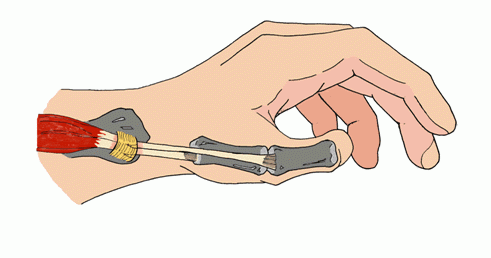De Quervain's disease
What it is:
it is an inflammation of two tendons at the base of the thumb. It causes an intense pain at the wrist, at the level of the base of the thumb during grip movements enabling sometime the most common daily life activities; it can irradiates up the forearm. Pain increases with forceful grasping and twisting. Rarely it solves spontaneously and tends to become chronic. Repetitive activities such as holding a baby, playing music, some sport and working activities can be the main cause.
Diagnosis is clinical: typical is the test in which the patient makes a fist with the fingers clasped over the thumb. The wrist is then bent in the direction of the little finger causing intense pain.
Treatment:
Conservative treatment must be the first step of treatment consisting in resting the thumb and wrist by wearing a night splint associated to oral anti-inflammatory medication. A cortisone-type of steroid may be injected into the tendon compartment.
When symptoms are severe or do not improve, surgery may be recommended. The goal of surgery is to open the compartment to make more space for the inflamed tendons. Normal use of the hand can usually be resumed once comfort and strength have returned.


